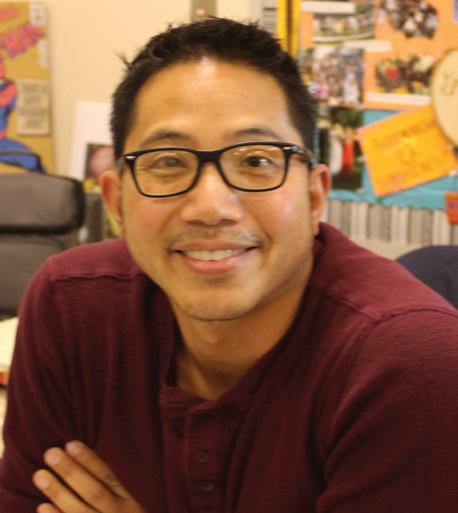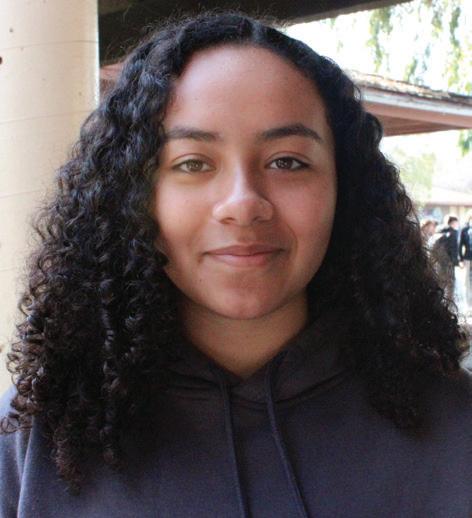
3 minute read
Defining EXPLORING THE ROLE OF AFFIRMATIVE ACTION Diversity
ESSAYS, ACADEMIC transcript and extracurriculars. These are only a few of the boxes students fill in on their college applications each year. But students are asked to check one box that cannot be curated: their race.
Should admissions officers consider a student’s race when deciding to admit them? California voters said no in 1996 and 2020. That question will now be answered nationwide in June.
The United States Supreme Court saw two cases on Oct. 30: Students for Fair Admissions v. University of North Carolina and Students for Fair Admissions v. Harvard. These cases both dealt with race-conscious admissions to universities, also known as “affirmative action.”
It is widely believed that the conservative majority on the Supreme Court will rule to severely limit the practice.
However, Palo Alto High School senior Johannah Seah said she worries that striking down affirmative action would increase inequity.
“My mom personally benefited from affirmative action as an immigrant, so I know that these policies are helpful and inclusive,” Seah said. “White Americans will always be privileged in education. By making it [college admissions] race blind, you’re taking away that nuance.”
According to Sally Chen, education equity program manager for the civil rights nonprofit Chinese for Affirmative Action, the origins of affirmative action were centered around reparations, not diversity.
“How do we account for the legacies of years and years of particularly Black people in this country being systemically excluded from opportunities?” Chen said.
But now, Chen said higher institutions use affirmative action toward a different goal.
“It [affirmative action] allows universities to consider race … alongside things like geography, religion, gender equality, for the purpose of having a diverse student body,” Chen said.
A lack of diversity in school can have an adverse effect on students, according to Castilleja sophomore Sophie Profit, who is of Mexican descent.
Profit said she has noticed a lack of representation of her ethnic community at her school.
“People who are underrepresented at my school sort of stick together and form smaller friend groups,” Profit said. “When you can’t identify with many people at your school it becomes really hard to fit in.”
Despite the impact diversity has on students’ education, measures to increase diversity have often been challenged. In a 2007 ruling, the Supreme Court found it unconstitutional for a Seattle school district to use race as a tiebreaker for admissions.
Another case evaluating possible discrimination at Thomas Jefferson High School for Science and Technology, an elite Virginia high school that considered factors such as income and English-language proficiency when admitting students, is now making its way through federal court.
Starting in 1986 to reduce racial isolation, Palo Alto Unified School District’s Voluntary Transfer Program busses students in from the Ravenswood City School District in East Palo Alto.
While Chen said that it is unlikely that programs like Palo Alto’s will be directly affected by the Supreme Court’s decisions, she said she is concerned that people’s perceptions of the role of race in education will be changed.
“In the potential aftermath of a negative decision … I think talking about race could still be important to how you learn about who you are and the work you want to do,” Chen said. “That is still allowed and students shouldn’t feel like they need to hide parts of their identity.” v
53.4%
Data presented is from an opt-in survey by Verde Magazine of 175 Palo Alto High School students and was collected from Feb. 5 to Feb. 9 hrough a digital form published on Schoology pages and Verde social media. Responses were anonymous and all questions
What is the responsibility of schools to ensure diversity?
Palo
“I think diversity is incredibly important. No matter your race, culture, socioeconomic class, your ability levels, your gender expression and identity and sexual orientation. No matter what that is, you come through life with a unique perspective. And the more diversity we have, one: more people get represented; two: more people’s identities get validation, meaning that they have more of a sense of belonging, and three; the learning that comes of it will be inclusive and empathetic, which could let education and people’s careers go anywhere.”
Palo
Sabela Chelba
Palo Alto High School sophomore
“It’s worth it to try and ensure diversity, but at the same time, merit should always come over diversity. But then that becomes tricky because academic merit is largely based on lower education and because of the history of race in this country, lower education is not accessible to everyone equally.” Photo: Alma
August
Mondragon
Palo
“Schools definitely have a responsibility to ensure diversity. In private schools it might be slightly less just because they’re not publicly owned and organized, but I still think schools generally have a responsibility.”
Palo Alto High School sophomore



“Schools have a responsibility to promote diversity. Because as you proceed in life, you’re going to be met with people from different cultural backgrounds, and I think school is the perfect opportunity for people to start to get exposed to other cultures so that in the future, you’re able to communicate and adapt to other work styles.”

By ANNA GHEREGHLOU









